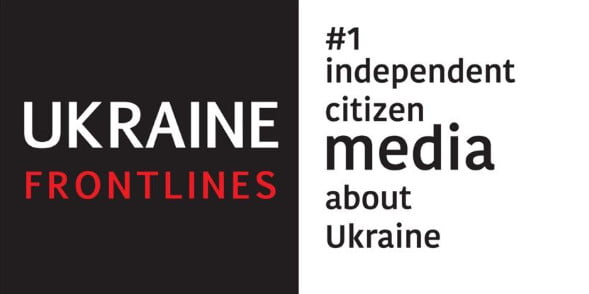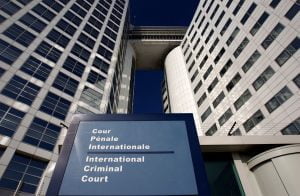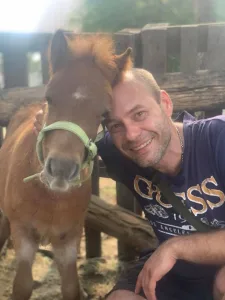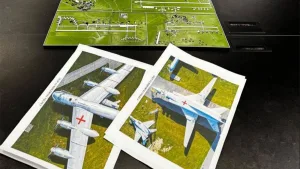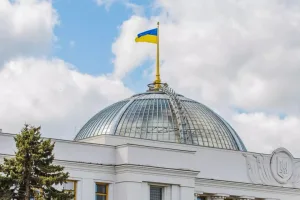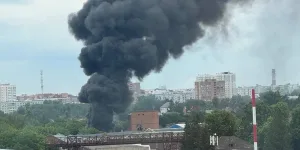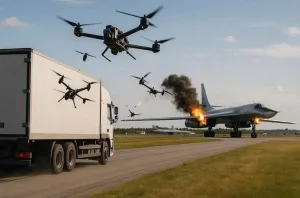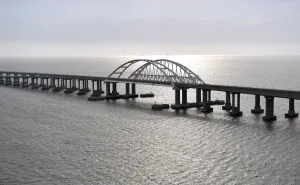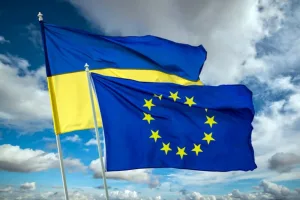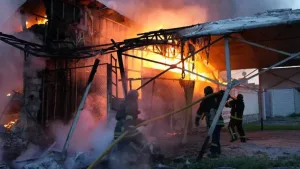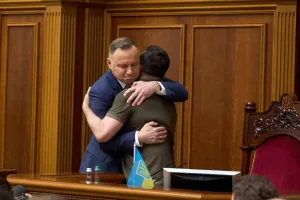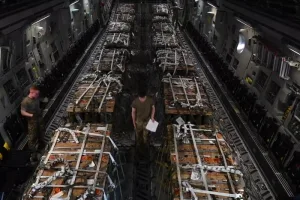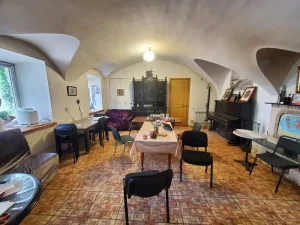Is there any serious consideration of how Russian “Occupational Force” might withdraw Moldova via Ukrainian territory? Would these troops be required to give up their arms while travelling through Ukrainian territory? One could hardly imagine a group of 1,200 armed enemy troops cavorting through Ukraine.
1. A Brief Guide of the Historical Context
The so-called ‘Pridnestrovian Moldavian Republic’ (PMR) or Transniestria as it commonly called in English derives originaly from the Russo-Turkish War (1806–1812) in which the Muscovites derived some gain at the Treaty of Bucharest in 1812 – notably the ceding the eastern part of what was then known as “Bessarabia”.
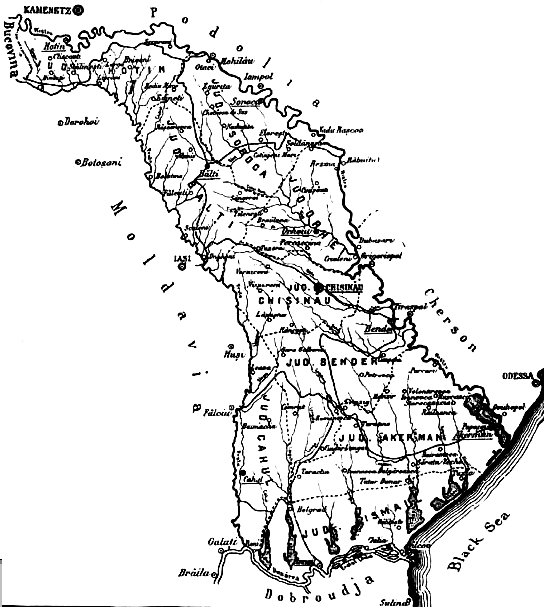
Most (some 60%) of what is today old Bessarabia in now Moldova after the old Principality of the same name which dates back to the 1300sAD. The so called ‘Pridnestrovian Moldavian Republic’ occupying the other part of those regions ceded to Moscow in the 1812 Treaty of Bucharest. At times, such as in 1856 under the Treaty of Paris (following the Crimean War) the Muscovite southern part was returned to Moldova which then for a while joined a renewed Romania in 1859.
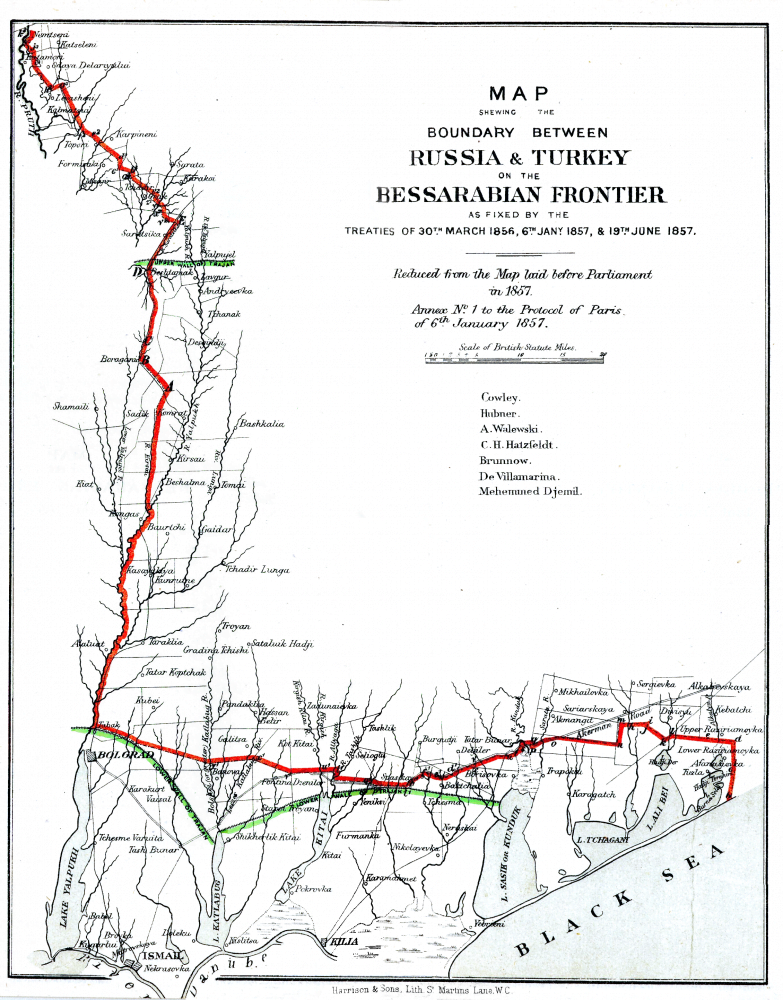
.
In 1877-78 there was another brief Russo – Turkish War in which the Muscovite Empire and the relatively newly reborn Romania were allies, Moscow guanteeing Romania’s territorial integrity. However at the conclusion of the war against the Turks southern Bessarabia – the part ceded by the Treaty of Paris in 1856 – was seized by the Tsarist Empire. The excuse of the then Muscovite Foreign Minister being that it was given to Moldova not Romania. In return by the 1878 Treaty of Berlin Romania was given Dobruja (Dobrogea in Romanian), a strip of land on the coast at the expense of the defeated Turks. The Ottoman Empire in those times was known as “the sick man of Europe” and was in terminal decline so Muscovy could afford to be generous to those it stole from. In addition the Tsarist Muscovites employed a form a ‘ethnic clearing’ and re-settlement in the area, expelling Muslims and encouraging Muscovites, Ukrainians, Bulgarians, Germans and Jews to relocate to the area. As a result whereas the Romanian population was some 86% in 1816 it fell to 52% in 1905. Much the same sort of process would later be used in Crimea of course.
Following the 1917 Revolution in the Muscovite Empire a brief Moldovan Democratic Republic was proclaimed and Bessarabia too (in 1918) proclaimed it’s independence from Muscovy thereafter voting to join what became known as Greater Romania. Most of the world recognised this union at the 1920 Treaty of Paris. Moscow however did not recognise this and in the ‘Moldavian Autonomous Soviet Socialist Republic’ (Moldavian ASSR) was formed in the territory of the then Ukrainian SSR – and this is the land where now exists the so called ‘Pridnestrovian Moldavian Republic’ today.
Bessarabia was also included in the infamous 1939 Molotov–Ribbentrop Pact where it was recognised as a legitimate Soviet ‘sphere of influence’ and so accordingly after the redivision of Poland and the Baltics with Hitler Moscow issued an ultimatum to Romania. The Romanians caved in and a ‘Moldavian Soviet Socialist Republic’ was set up comprising the bits of Moldova which had been given up by Romania and the Moldavian ASSR which had been formed on formerly Ukrainian land. The Germans that had relocated there the previous century naturally left and when Romania joined sides with Nazi Germany on their attempted invasion of the Muscovite Empire the Jews were murdered as elsewhere. Upon the conclusion of WW2 Romania was virtually ceded to Muscovite influence at the infamous Yalta Conference. The Muscovite Soviets set up a ‘Socialist Republic’ in Romania and promoted the theory that the Moldovan language was seperate and distinct from Romanian to promote the idea that Moldovans are different from from Romanians (a form of opposite about their current lies regarding Ukrainians being the same people as Muscovites).
All went comparatively smoothly – and backwards – as the rest of the Soviet Empire until 1990 when the supremacy of Moldovan law to Soviet law was declared and following the failed coup in Moscow in 1991 Moldova declared it’s independence – Romania being first to recognise this new found independence. However the ethnic make up in what became the so called ‘Pridnestrovian Moldavian Republic’ had been changed compared to most of Moldova (much as it would be changed in Crimea by the Tatar deportation post 1945). East of the Dniester only 40% of the population were Moldovan. This bit of former Greater Romania having been formed on the land of the former Ukrainian SSR 28% of the population was Ukrainian and another 26% was Muscovite. Additionally in the area was the HQ of the Soviet 14th Guards Army which joined in on the side of rebels during the fighting in 1992 when a ceasefire was signed on 21st July. The ceasefire has held since. Ceasefires, Frozen Conflicts and Negotiations since 1992.
2. Ceasefires, Frozen Conflicts and Negotiations since 1992
During the mid 1990s following the dissolution of the USSR the term ‘frozen conflicts’ first became used to denote those parts of former ‘Soviet Socialist Republics’ that had violently rebelled against the heartland of the former ‘Soviet Socialist Republic’. Thus Nagorno Karabakh had been ruled during Soviet times by the Azerbaijan SSR but was mostly populated by Christian Armenians (although they speak a different Armenian from that spoken in Yerevan) and a violent conflict ensued in 1992-93. Similarly Abkhazia and South Ossetia broke away from the former Georgian SSR in 1990/91. The ‘Pridnestrovian Moldavian Republic’ (PMR) was recognised as another one of these border skirmishes on the outskirts of the of the former Soviet Empire. Nobody recognised these supposed independent republics apart from the other statelets. All received Muscovite support in lesser or greater ways – Muscovy famously fighting a brief war with Georgia in 2008 supposedly in defence of it’s client statelet South Ossetia in the same way as Ukrainian victory in 2014 against the GRU organised formative ‘Republics’ in Donbass was only prevented by direct Muscovite intervention.
Today so called ‘Transdniestria’ is virtually owned by Muscovite ‘business’ (Mafia). The Moldova Steel Works in Rîbnița is owned by the Muscovite Metalloinvest, owned by Alisher Usmanov. In 2007 this wise benefactor and former fraud convict Usmanov bought the ‘Transdniestrian’ debt to Gazprom (the gas being supplied via Ukraine). Being unrecognised by most of the world has it’s economic drawbacks – investment is unlikely, the debts pile up, exports is hard and as ever in difficult times people resort to smuggling and other criminal enterprises. Transdniestrian gangs smuggling people, drugs, alcohol and cigarettes are quite well known even in Krakow (Poland) where they collaborate or compete with others. Moldovan Ladies are well known for falling into the hands of the criminal underworld and exported as sex ‘workers’ or more literally slaves to Western Europe.
Despite this some sort of international initiative has been attempted in fit’s and starts to resolve the ‘frozen conflict’. This has always been undertaken under the auspices of the OSCE and since 2005 in a format known as the “5+2” format (meaning Muscovy, Ukraine, the OSCE, Moldova, so called ‘Transdnestria’, as well as – or ‘+’ – the U.S. and the EU). The merits of this particular ‘format’ could be debated but represented at the time quite a victory for Ukrainian diplomacy in the wake of the 2004 ‘Orange Revolution’. An obvious problem with the “5+2 format” being that Romania was included – apart from the obvious limitions of the OSCE as long as long Muscovy remains an accredited member when it itself is the primary mover and party to all these ‘regional conflicts’. The “5+2” talks completely lapsed at times – resuming in 2011 after their innitial set up. Of course by 2011 was already the Ukrainian Government under the criminal Yanukovych was basically just another Muscovite proxy so three sides of the talks – Muscovy, Ukraine and so called ‘Transdnestria’ all advocated the same line.
Of course the “5+2” format, once set up, was to work on the basis of the proposals prior to the ‘format’ being set up. Of these there were two; the first being what is known as the “Primakov Memorandum” ( Yevgeny Primakov being the then Muscovite Foreign Minister) or the 1997 “Moscow Memorandum”. This essentially allowed for talks between the real Moldova and ‘Transdniestria’ on the basis of them being the same country – which theoretically although not always historically was correct. The idea being to solve the ‘frozen conflict’ it was argued that the two sides had to talk… This of course is exactly the same as the Putin Mafia Muscovy urging Ukraine to speak to it’s proxies in the occupied areas today. In 1997 the Muscovite regime was not entirely dominated by a Chekist Mafia and in some ways there was still hope so the Moldovans went along with this the “Primakov Memorandum”.
The second proposal prior to the setting up of the “5+2” format is known as the “Kozak memorandum” (http://www.stefanwolff.com/files/Kozak-Memorandum.pdf ) which Moscow in 2003 proposed was an ‘extension’ of the former “Primakov Memorandum.” This provided for what we might in today’s Ukrainian terms a form of “federalisation”. Muscovite would be recognised as ‘State language’ and their proxies in so called ‘Transdniestria’ could veto any changes to the constitution of Moldova – such as rejoining a ‘Greater Romania’ or the EU – or God forbid NATO. This ‘Memorandum’ the then Moldovan Government was wise enough not to agree to but yet remains the basis of the Muscovite proposal for a ‘solution’ of the ‘frozen conflict’. Again those familiar with more recent events regarding Ukraine and the Muscovite occupation of Crimea and parts of Donbass may see the same handbook being used in negotiations regarding Minsk 1 and 2 and the ‘automonous status’ that is demanded regarding the occupied areas of Donbass.
This though was after the 1999 OSCE Summit in Istanbul in which the then Muscovite Government gave it’s commitment to withdraw the parts of their army previously known as the Soviet 14th Guards Army. They never have withdrawn but were renamed as the “Operative Group of Russian Troops (OGRT)” or “Peacekeepers” despite having taken part in the 1992 battles on the ‘Transdniestrian’ side. In 2017 the Moldovan Constitutional Court ruled that these Muscovite forces were an “occupational force” and as such Moldova has the right to demand their withdrawal. Moscow replies that they are “Peacekeepers” and will not be withdrawn until a final settlement is agreed – presumably with it’s consent and to it’s liking. It was all theses events that in some way led up the recent proposal from Ukraine that Muscovite forces in so called ‘Transdniestria’ “withdraw via Ukraine.” Thus the formal – legal – background to the current speculation regarding the Ukrainian “offer”.
3. The Real Politic Game at Play
The current Moldovan Government lead by Prime Minister Pavel Filip of the Democratic Party is pro Western in general terms and at loggerheads with the current Moldovan President Igor Dodon of the Socialist Party who’s stance is decidely pro Moscow. This battle has been played in the courts with the Constitutional Court ruling Dodon’s authority suspended at times.
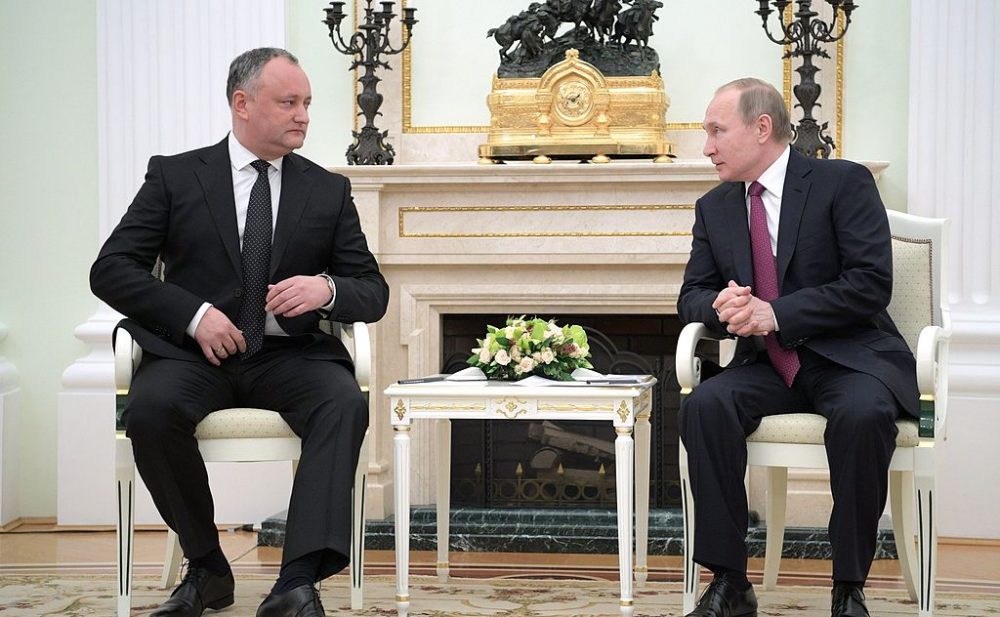
.
The Moldovan Constitutional Court alongside it’s rulings against Dodon has as mentioned above labelled the ‘OGRT’ Muscovite “Peacekeepers” as an “Occupational Force” which of course legally it must be by the 1997 “Primakov Memorandum” even. Of course the other thing that has materially changed since 2014 is Ukraine – a member of the “5+2” format group now largely on the side of the Moldovan pro Westerners. Ukrainian – Romanian relations have also notably improved since 2014. It should be noted here just like Muscovite investment in so called ‘Transdniestrian’ via Usmanov (and others) Romania is invested in the ‘recognised Moldova’ where many people have Romanian passports. There have been demonstrations in Moldova since 2014 for (re)union with Romania. In addition since 2014 and the start of Muscovite aggression against Ukraine the whole world has at last to some extent woken upto the criminal nature and imperialistic ambitions of Putin’s Chekist Mafia gang. From the illegal annexation of Crimea to interference in US elections to the Skripal murder attempts in the UK to the Syrian chemical weapons attacks Putin has more or less made Muscovy a pariah state. Thus the Moldovan Government’s call for the Muscovite ‘OGRT’ “Peacekeeps” must be viewed against this background also.
If you are hoping for a swift removal of the old 4th Soviet Guards or ‘OGRT’ “Peacekeepers” from so called ‘Transdniestria’ do not hold your breath. The Ukranian side know this so the offer is made knowing it will be refused but to look as if trying to help. The Moldovans too know this is not about to happen so let’s not fool ourselves that this is likely. However there may be a deeper point at play – we cannot say that there is – but it is possible that should the Moldovan demand for withdrawal – alongside the ‘kind’ Ukrainian “offer” of withdrawal via Ukraine be turned down by Moscow it may act as a later reason for Moldova and/or Ukrainian and even Romania to act forcibly to remove “Occupational Force” of Muscovite troops in so called ‘Transdniestria’. For now it just embarrasses Moscow diplomatically but they will recognise the underlying threat inherent in the implications of further obfuscation.
4. The Perspectives
Muscovy of course in the current context will refuse the Ukrainian “offer”. Only force or alot of money in backhanders is recognised currency in today’s Moscow. It is likewise normal that Ukraine should make this “offer” as Ukraine is de facto at war with Muscovy and the Muscovite forces and criminal smuggling gangs in so called ‘Transdniestria’ cost alot of Ukrainian border police and armed forces to counter that otherwise could be used elsewhere. The Moldovan’s naturally want so called ‘Transdniestria’ back and possibly one day reunion with Romania.
I have advocated since 2014 for better Ukrainian – Romanian relations based on shared interests on the Black Sea region and a marginal redrawing of the borders. The so called ‘Transdniestrian’ area should in my view be part of this. It has nothing to do with Muscovy except that it was previously occupied by their Tsarist and Soviet Empires which changed the borders as they waned or waxed. Moldovan is a latin language like Romanian – not Slavic Ukrainian or Muscovite. I would even argue that since Ukraine is de facto at war with Muscovy Ukraine alone has a right to evict Muscovite troops from a unrecognised area of Moldova. Ideally of course this should be done in conjunction with Moldova and with consultation with Romania. “Snip it out” has long been my personal view. At present it takes up Ukrainian manpower to control the so called ‘Transdniestrian’ border and forces to counter some eastern infringement toward Odessa from the Muscovite aggressors forces in so called ‘Transdniestria’. A reunited Molova would be beneficial to Ukraine once borders were margianally adjusted. Why should not the Romanian speaking villages in the mountains be returned to a whole Moldova or new Greater Romania if the previous Dniester natural border is restored to Ukraine? Such rather obvious solutions to a long term border agreement though can only be addressed once the Muscovite “Occupational Force” is removed from so called ‘Transdniestria’ and the proxy state rejoined to it’s rightful Moldovan Government control.
For Ukrainian diplomacy this “offer” should be just be a part of long term goal with the aim of making permanent alliances – including military alliances with it’s Moldovan and Romanian neighbours – a prelude of joining the EU or even NATO. The end of the so called ‘Transdniestria’ and the elimination of the agressors “Occupational Force” there will be a relief to Ukraine strategically and psychologically – the back door threat being removed.
It is not about to happen soon despite Moscow’s enforced reduction in it’s military budget. There are some 1,200 ‘Peacekeepers’ or “Occupational Force” in so called ‘Transdniestria’ – relatively cheap to keep in place compared to maintaining a surface fleet or developing new systems. Nor can a dictatorship be seen to “go backward”. The Soviet withdrawal from Afghanistan in 1989 was the beginning of the end of the USSR that Putin so laments. Without the Muscovite “Occupational Force” in place Moldovan union would be inevitable and perhaps anothe reunion with Romania also in the longer term. For dictators who cultivate an air of pseudo religious infallibility to be seen to lose is fatal.
Nor is there any serious consideration on the Ukrainian side of how the Muscovite “Occupational Force” might withdraw via Ukrainian territory. Would these troops be required to give up their arms while travelling through Ukrainian territory? Presumably so. One could hardly imagine a group of 1,200 armed enemy troops cavorting through Ukraine. Where would they leave Ukrainian territory? Well obviously the nearest temporary border would be into occupied Crimea but to allow them to be ‘repatriated’ in Crimea might imply Ukrainian recognition of the occupation. How can they be ‘repatriated’ to what is legally Ukrainian territory? They cannot. The same of course is true for the ‘temporarily occupied regions’ in Donbass. Indeed the only way they could be ‘repatriated’ via a legal border is on the norther border between Chernihiv and Kharkiv. Have such considerations been catered for in Kyiv? It seems most unlikely because in truth everyone knows this is not going happen.
This is primarily a diplomatic game done to make Moscow look bad. Moldova demands the withdrawal; Ukraine offers to help. Moscow sulks because it seen as not fulfilling it promise of 1999. Yet having refused such demands and kind offers of help it Moscow risks standing on lesser ground long term should the decision be taken to forcibly remove the Muscovite “Occupational Force”. Therein lies the deeper game.
Richard Drozdowski for EMPR
